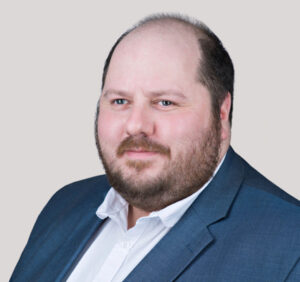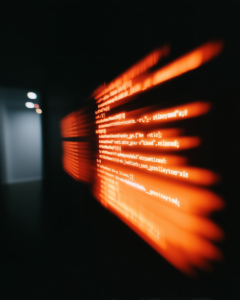14/03/2019
For the first time in over a decade, the EPO’s Enlarged Board of Appeal has been invited to decide on questions of patentability of computer-implemented inventions. Specifically, the Enlarged Board of Appeal – the EPO’s highest appeal body –has been invited to decide on whether a computer-implemented simulation is patentable, either by itself or as part of a design process.
This is welcome because computer-implemented simulations play an important role in the development of new products. The problem for applicants is that the patent laws of most countries place restrictions on what can and can’t be patented. In Europe, the inventive step of a computer-implemented invention is assessed by considering whether or not claimed features are ‘technical’ – if not then such features are ignored when assessing inventive step. But there is no precise definition of ‘technical’, at least under European patent law. Are the procedural steps of running a simulation ‘technical’?
This question was considered in a recent appeal decision at the EPO (Connor, T489/14), where the Board of Appeal was required to decide on the patentability of a computer-implemented method of simulating pedestrian movements within a virtual environment or building structure, as well as a method of designing a building structure including such a simulation. Such a simulation would be useful in designing and building large structures such as a railway station or sports stadium.
The problem faced by the applicant in this appeal was that the procedural steps of the simulation could potentially be carried out in lots of ways, including exclusively mentally. The claims did not include any step that took place outside of the computer itself, such as “building a structure based on the virtual environment or building structure in which the simulation took place”, whereby the interactions between the simulation and the final structure could show the simulation to have a real-world technical effect. Unless it could be shown that the simulation itself was technical, then all of the procedural steps of the simulation would be ignored for inventive step and the claims would lack inventive step over a general purpose computer.
The Board of Appeal in this case thought that simulating the movement of pedestrians (or indeed the movement of any object) as determined by laws of physics was not in itself a technical task producing a technical effect. The Board took the view that a technical effect requires, at a minimum, a direct link with physical reality, such as a change in or a measurement of a physical entity. The virtual environment may or may not ever be built, and the simulation could be run to support purely theoretical scientific investigations, or it could be used to simulate the movement of pedestrians through the virtual world of a video game. Therefore the Board of Appeal was minded to find that the claims lacked inventive step.
But, the Board of Appeal recognized that an earlier decision (Circuit simulation I/Infineon Technologies T1227/05) had found that a claimed numerical simulation of a noise-affected circuit described by a model featuring a system of differential equations was a functional technical feature.
The reasoning given in this earlier decision was that simulation performs technical functions that are typical of modern engineering work. It provides for realistic prediction of the performance of a designed circuit and thereby ideally allows it to be developed so accurately that a prototype’s chances of success can be assessed before it is built. It was further stated that the technical significance of this result increases with the speed of the simulation method, as this enables a wide range of designs to be virtually tested and examined for suitability before the expensive circuit fabrication process starts.
It was also stated in the earlier decision that industrial simulation methods were becoming more and more crucial to technological progress and that, in a globally distributed industry, development and production were becoming increasingly separated, both materially and geographically. The Board of Appeal responsible for the earlier decision therefore considered patent protection to be appropriate for numerical development tools designed for a technical purpose.
The Board of Appeal for the present case seemed to accept that the procedure of simulation in the claimed invention would be technical if the rationale of this earlier decision was followed.
But the Board was not convinced by the reasoning of the earlier decision. They thought that, although a computer-implemented simulation of a circuit or environment is a tool that can perform a function “typical of modern engineering work”, it assists the engineer only in the cognitive process of verifying the design of the circuit or environment, i.e. of studying the behaviour of the virtual circuit or environment designed. The circuit or environment, when realised, may be a technical object, but the cognitive process of theoretically verifying its design appears to be fundamentally non-technical. Second, the earlier decision appears to rely on the greater speed of the computer-implemented method as an argument for finding technicality. But any algorithmically specified procedure that can be carried out mentally can be carried out more quickly if implemented on a computer. The implementation of a non-technical method on a computer does not necessarily result in a process providing a technical contribution going beyond its computer implementation.
In the interests of legal certainty and in view of the industrial importance of computer simulations, the Board of Appeal for the present case has referred several questions to the EPO’s Enlarged Board of Appeal, whose answers to these questions will have binding effect at the EPO:
1: “In the assessment of inventive step, can the computer-implemented simulation of a technical system or process solve a technical problem by producing a technical effect which goes beyond the simulation’s implementation on a computer, if the computer-implemented simulation is claimed as such?” (In other words, can computer simulations be patented?)
2: “If the answer to the first question is yes, what are the relevant criteria for assessing whether a computer-implemented simulation claimed as such solves a technical problem? In particular, is it a sufficient condition that the simulation is based, at least in part, on technical principles underlying the simulated system or process?” (In other words, what criteria are to be used for deciding if a computer simulation is patentable?)
3: “What are the answers to the first and second questions if the computer-implemented simulation is claimed as part of a design process, in particular for verifying a design?” (In other words, does claiming the computer simulation as part of a design process change anything?).
We think most people would welcome legal certainty on these questions and the Enlarged Board’s answers may well have useful application not just in the field of computer simulations, but for all applications involving elements that fall within one of the categories of subject-matter excluded from patentability under the European Patent Convention.
The Enlarged Board’s answers may also be influential outside of the EPO such as in national courts around Europe. In England and Wales, the excluded subject-matter requirements are the same as at the EPO but courts follow a different approach to assessing whether a patent meets these requirements.
The courts’ view on the patentability of computer-implemented design methods has changed in the past decade in a similar manner to the change in EPO practice following the noise simulation decision (Circuit simulation I/Infineon Technologies T1227/05). For example, in 2005, the decision in Halliburton Energy Services, Inc. v Smith International (North Sea) Ltd & Ors [2005] EWHC 1623 (Pat) found a computer-implemented method of designing a drill bit to be non-patentable on excluded subject-matter grounds because it did not include a step of manufacturing a drill bit according to the design. But, when the courts considered a similar invention six years later in Re Halliburton Energy Services Inc. [2011] EWHC 2508 (Pat), such a manufacturing step was held to be unnecessary and the claimed computer-implemented method of designing a drill bit was found patentable without such a limitation.
While answers from the Enlarged Board on these questions will not be binding on English courts, they may prove persuasive, either confirming or contradicting the change in practice in English courts and at the UK Intellectual Property Office following the second Halliburton decision. At the same time, the Board of Appeal for the present case cited both of these English court decisions as being relevant for the questions referred to the Enlarged Board, and so they may end up proving persuasive to the Enlarged Board.
If you would like more information on patenting computer-implemented simulations in Europe or the UK in particular, or on patenting computer-implemented inventions more generally, please contact your Reddie & Grose attorney.
This article is for general information only. Its content is not a statement of the law on any subject and does not constitute advice. Please contact Reddie & Grose LLP for advice before taking any action in reliance on it.


